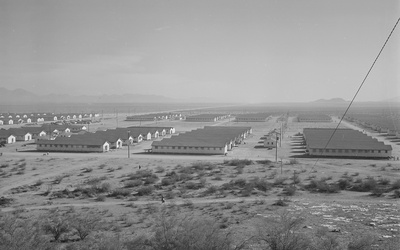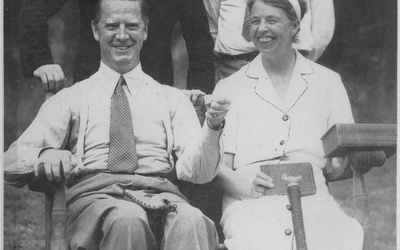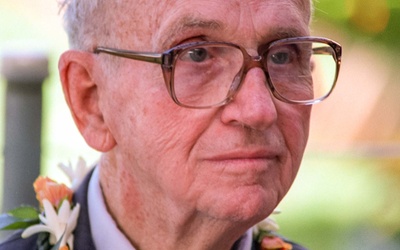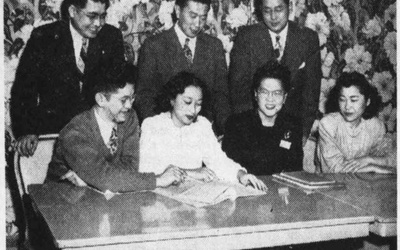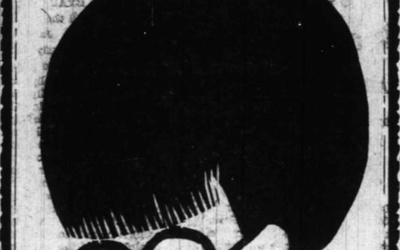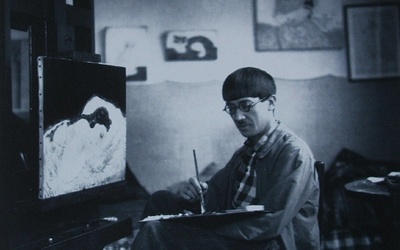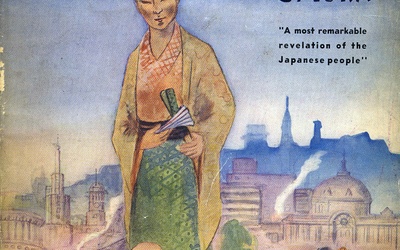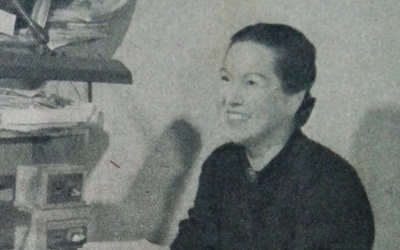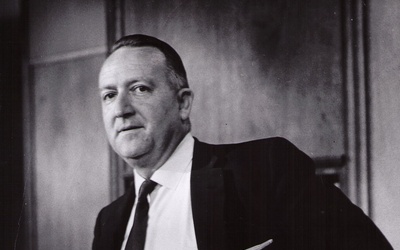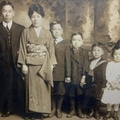
Greg Robinson
@GregGreg Robinson, a native New Yorker, is Professor of History at l'Université du Québec À Montréal, a French-language institution in Montreal, Canada. He is the author of the books By Order of the President: FDR and the Internment of Japanese Americans (Harvard University Press, 2001), A Tragedy of Democracy; Japanese Confinement in North America (Columbia University Press, 2009), After Camp: Portraits in Postwar Japanese Life and Politics (University of California Press, 2012), Pacific Citizens: Larry and Guyo Tajiri and Japanese American Journalism in the World War II Era (University of Illinois Press, 2012), and The Great Unknown: Japanese American Sketches (University Press of Colorado, 2016), as well as coeditor of the anthology Miné Okubo: Following Her Own Road (University of Washington Press, 2008). Robinson is also coeditor of the volume John Okada - The Life & Rediscovered Work of the Author of No-No Boy (University of Washington Press, 2018).
His historical column “The Great Unknown and the Unknown Great,” is a well-known feature of the Nichi Bei Weekly newspaper. Robinson’s latest book is an anthology of his Nichi Bei columns and stories published on Discover Nikkei, The Unsung Great: Portraits of Extraordinary Japanese Americans (University of Washington Press, 2020). It was recognized with an Association for Asian American Studies Book Award for Outstanding Achievement in History Honorable Mention in 2022. He can be reached at robinson.greg@uqam.ca.
Updated March 2022
Stories from This Author
How fair is “Fair Enough?” Westbrook Pegler and Japanese Americans - Part 2
Feb. 12, 2021 • Greg Robinson , Jonathan van Harmelen
Read Part 1 >> On May 4, 1943, a few days after his two columns on Japanese Americans appeared in print (and less than two weeks after Eleanor Roosevelt’s tour of the same camp) Pegler came to Gila River. Afterwards, Pegler wrote in his May 6, 1943 column that conditions were austere and trying, but asserted that many Japanese Americans – specifically Kibei - were disloyal and “savages like the Japanese soldier.” He cited a rumor spread by a nurse …
How fair is “Fair Enough?” Westbrook Pegler and Japanese Americans - Part 1
Feb. 11, 2021 • Greg Robinson , Jonathan van Harmelen
On March 28, 1945, the Manzanar Free Press ran a remarkable article relating to Japanese Americans. In discussing the U.S. Supreme Court’s ruling in the case of Korematsu vs. United States, the text cited the noted (and notorious) newspaperman Westbrook Pegler, who had proclaimed in his nationally syndicated column “Fair Enough” that Fred Korematsu had been convicted for violating a rule issued by “a lieutenant-general”—referring to General John DeWitt –“but (who) might as well have been a corporal.” In addition …
Mari Sabusawa Michener: Supporter of the Arts
Jan. 28, 2021 • Greg Robinson
Read Part 1 >> Following their wedding, James and Mari Michener went on an extended honeymoon in Hawaii and Australia. In the period that followed, they moved to Hawaii, where James A. Michener did research for his bestselling 1959 novel Hawaii. However, two years later, the couple unleashed a storm of controversy when The New York Post journalist Joseph Wershba ran an article quoting Michener as saying that the couple had been forced to leave Hawaii due to racism against his …
Mari Sabusawa: Champion of Civil Rights
Jan. 27, 2021 • Greg Robinson
One arena of public life in which Japanese Americans have achieved great visibility during the 20th century is the arts. A constellation of brilliant Nisei artists, including Isamu Noguchi, Ruth Asawa, George Nakashima, Shinkichi Tajiri, Frank Okada, and Satoru Abe, won renown on the national and international level for their work. Curiously, one of the most outstanding Nisei contributors to the American artistic and literary scene was Mari Sabusawa Michener, a woman who never produced any artwork or creative fiction on …
Foujita Discovers the Americas: An Artist's Tour - Part 2
Jan. 8, 2021 • Greg Robinson , Seth Jacobowitz
Read Part 1 >> After his stays in Brazil, Argentina, Bolivia, Peru, and Cuba, Tsuguharu Foujita resumed his round-the-world tour. In November 1932, he arrived in Mexico City. As an international celebrity in the art world, he was already well-known to Mexican art lovers. As early as 1922, his work had been the subject of a feature article in the newspaper Excelsior, “Foujita, Un grande y extraño artista japones, muy apludido en Paris.” [Foujita, A great and strange Japanese artist, Greatly …
Foujita Discovers the Americas: An Artist's Tour - Part 1
Jan. 7, 2021 • Greg Robinson , Seth Jacobowitz
The name of Léonard Foujita (AKA Tsuguharu Foujita) has lost much of its luster today. However, in his heyday in Paris in the 1920s, Foujita was not only the most celebrated Japanese artist in the world, but (along with Hollywood star Sessué Hayakawa) arguably the most famous living person of Japanese ancestry. Born Tsuguharu Fujita in Japan in 1886, the son of a Japanese general, in 1913 he left Japan to seek his career as a painter in Paris (where …
Kin was Much More than Kind: The Japanese Student Who Transformed Maryville
Nov. 30, 2020 • Greg Robinson
Kin Takahashi, a Japanese student at Maryville College in Eastern Tennessee at the turn of the 20th century, attracted nationwide attention for his achievements on campus. In the succeeding century, he stood as a legendary figure at his alma mater. As is often the case with legends, separating fact from fiction can be a difficult business. Kin Takahashi was born in Yamaguchi, Japan, around the time of the Meiji Restoration, and grew up in the town of Hiramochi. Just when he …
Bunji Omura – New York Japanese Antifascist Writer and Publicist
Nov. 11, 2020 • Greg Robinson , Jonathan van Harmelen
Although the saga of the Issei generation has been written by a number of historians, our understanding the views of Issei writers and thinkers on Japan is still incomplete. While the work of Eiichiro Azuma delves into the connections of the Issei to Japanese expansionism and the rise of militaristic nationalism, few have examined their counterparts who spoke out publicly against Japan’s move toward fascism, and who defended democracy. One such voice was that of Bunji Omura. Bunji Omura was …
Ayako Ishigaki: Radical Issei Feminist Writer in Mid-Century America
Oct. 20, 2020 • Greg Robinson
In the years surrounding World War II, the Japanese-born writer and progressive activist Ayako Ishigaki lived in exile in New York and Los Angeles. During this time, she concentrated on opposing Japanese militarism. In lecture tours around the United States that she made alongside Chinese colleagues, she scored the Japanese occupation of China and called for boycotts of Japanese goods. Ishigaki was equally forceful as an author, most notably of the semi-fictionalized memoir Restless Wave, published in 1940 under the …
Leonard Arrington: Groundbreaking Historian of Japanese Americans
Sept. 29, 2020 • Greg Robinson , Christian Heimburger
In May 1962, Utah State University professor Leonard Arrington delivered a remarkable lecture on Japanese American confinement to his peers in Logan, Utah. It was one of the earliest scholarly examinations of Nikkei incarceration camps. Just how a middle-aged scholar specializing in Mormon history came to research and write about the ordeal of Japanese Americans during World War II forms something of a saga in itself. Leonard Arrington was born in 1917 and raised in the sleepy southern Idaho town …

